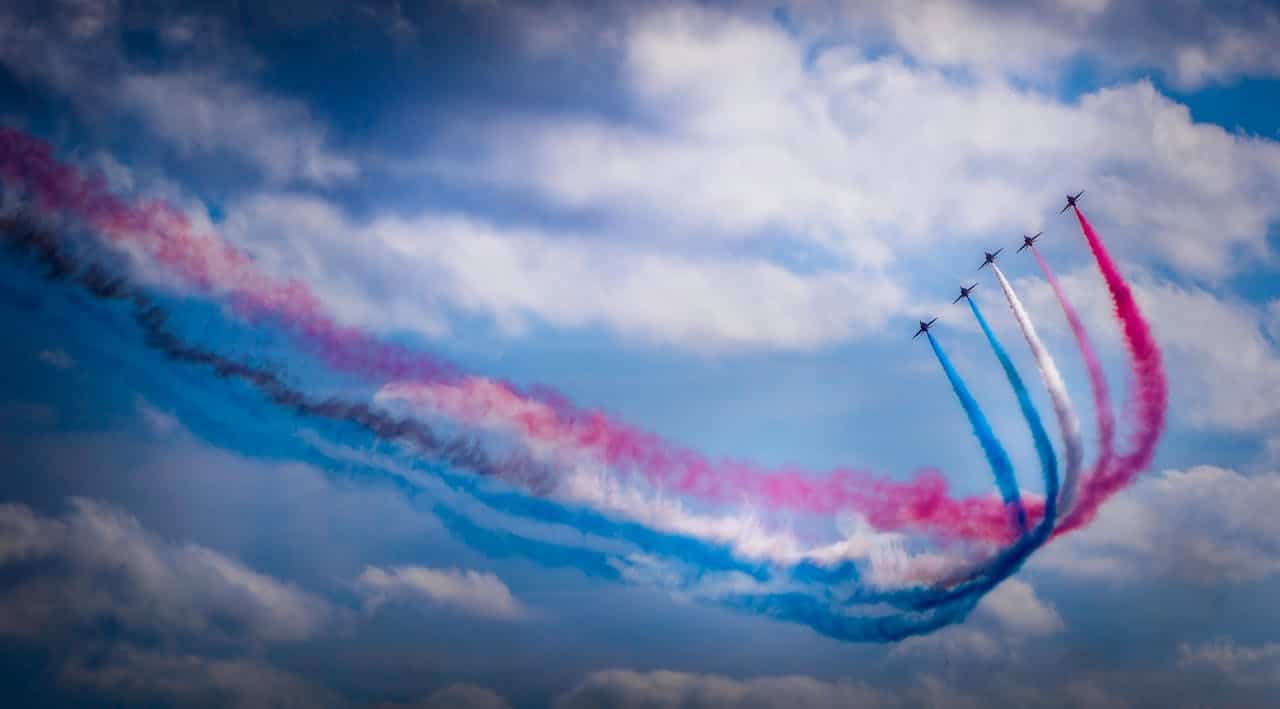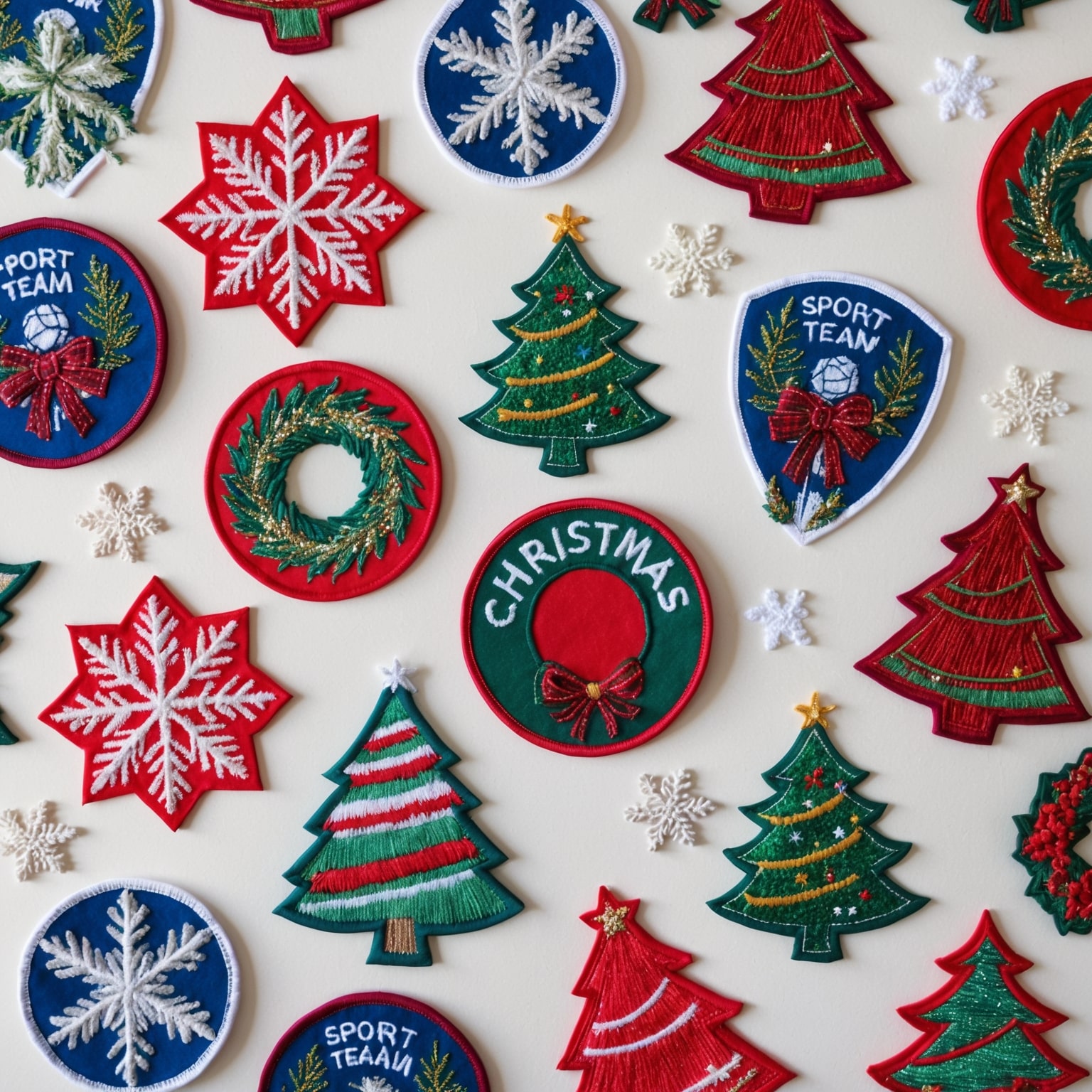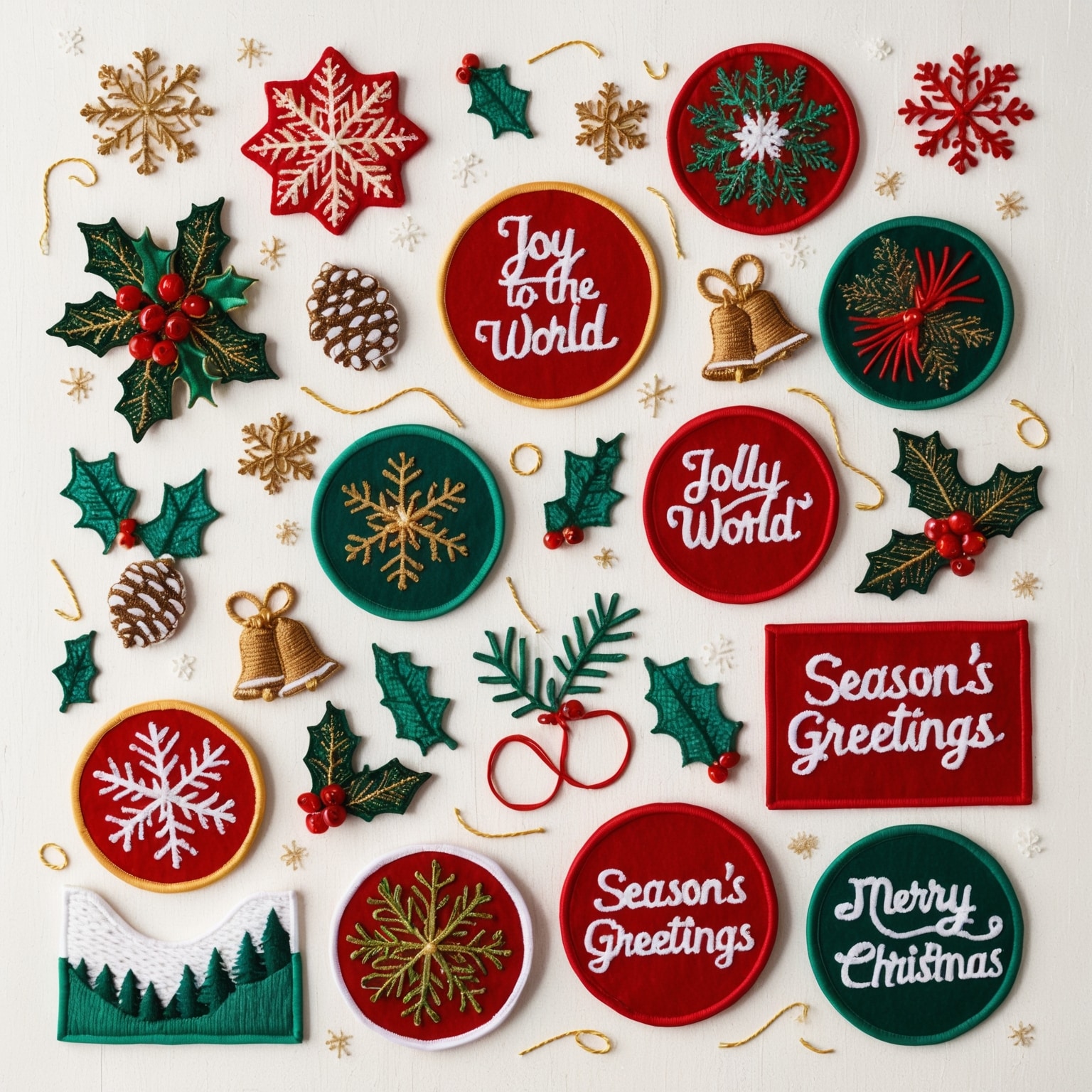Aviation has always been a field rich with tradition, history, and a unique culture that spans generations. One of the most cherished and enduring symbols in this community is the custom patch. These embroidered emblems serve as more than just decorative accessories; they are a means of capturing and preserving the rich heritage of aviation. From military squadrons to commercial airlines and private clubs, custom patches commemorate significant milestones, achievements, and identities. This article delves into how custom patches play a crucial role in the aviation industry, exploring their history, significance, design elements, and the ways they help to capture and preserve aviation heritage.
The History and Evolution of Custom Patches in Aviation
Custom patches have a long and storied history in aviation, tracing back to the early days of flight. Their evolution reflects the growth and changes in the industry, as well as the increasing desire to memorialize key moments and achievements.
- Early Military Aviation: The use of custom patches in aviation began with military forces. During World War I, pilots and ground crew members started wearing embroidered patches that represented their squadrons. These patches often featured unit insignia, aircraft types, or mission symbols. They served as a form of identification and pride, helping to foster a sense of unity and camaraderie among airmen.
- World War II and the Rise of Unit Patches: The tradition of custom patches grew significantly during World War II. As military aviation expanded, so did the variety and complexity of patches. Squadrons and units created unique designs that often included humorous or symbolic elements, reflecting the personalities and experiences of the personnel. These patches became treasured mementos for veterans, capturing the spirit and challenges of wartime service.
- Post-War Era and Civil Aviation: After the war, the use of custom patches spread beyond the military to include civil aviation. Commercial airlines, flight schools, and aviation clubs began creating their own patches to represent their organizations. These patches often featured company logos, aircraft, and destinations, celebrating the burgeoning world of commercial air travel.
- Modern Aviation and Collector Culture: In contemporary times, custom patches have become highly collectible items, sought after by aviation enthusiasts, historians, and collectors. The designs have become more sophisticated, often incorporating advanced embroidery techniques and materials. Today, patches are used by a wide range of aviation-related organizations, from small private flying clubs to large international airlines.
The Significance of Custom Patches in Aviation
Custom patches hold significant cultural and emotional value within the aviation community. They are not merely decorative; they serve as symbols of identity, achievement, and shared history.
- Symbols of Identity and Affiliation: For many in the aviation field, custom patches are a key part of their identity. They symbolize affiliation with a specific unit, squadron, airline, or aviation group. Wearing a patch signifies membership and belonging, whether it’s a military squadron, a commercial airline, or a private flying club.
- Commemoration of Achievements: Custom patches are often created to commemorate specific achievements, such as completing a challenging flight, participating in a significant mission, or reaching a career milestone. These patches serve as tangible reminders of personal and professional accomplishments, capturing moments of pride and triumph.
- Preservation of History and Heritage: Patches play a crucial role in preserving the history and heritage of aviation. They document the evolution of aircraft, missions, and organizations over time. For example, a patch from a defunct airline or a decommissioned military unit provides a glimpse into a past era, preserving memories that might otherwise be lost.
- Fostering Camaraderie and Esprit de Corps: Within military and other aviation groups, custom patches help foster a sense of camaraderie and esprit de corps. They represent shared experiences and challenges, creating a bond among members. This sense of unity is particularly important in high-stress environments, such as military aviation or emergency response units.
Designing Custom Patches for Aviation
Designing custom patches for aviation involves a thoughtful process that takes into account symbolism, aesthetics, and practicality. The goal is to create a patch that is not only visually appealing but also meaningful to its wearers.
- Incorporating Symbolism and Imagery: The imagery and symbols used in the design of a custom patch are crucial. These elements should reflect the identity and mission of the organization or unit. Common symbols in aviation patches include aircraft silhouettes, wings, globes, and national flags. The choice of symbols can convey a range of messages, from the type of aircraft flown to the geographic area of operations.
- Choosing Colors and Materials: The colors used in a patch design are also significant. They can represent national colors, organizational colors, or specific meanings (e.g., blue for the sky, gold for excellence). The materials chosen for the patch, such as the type of thread and backing, affect its durability and appearance. High-quality embroidery and materials are essential for creating a lasting and professional-looking patch.
- Incorporating Text and Numbers: Text and numbers are often included in patch designs to provide specific information, such as the name of the unit, the year of establishment, or a motto. The font style and size should be chosen to ensure readability and complement the overall design. It’s important to balance the amount of text with visual elements to avoid a cluttered appearance.
- Size and Shape Considerations: The size and shape of a custom patch are important factors to consider. While traditional patches are often round or shield-shaped, custom shapes can add a unique touch and better represent the organization’s identity. The size of the patch should be appropriate for its intended placement, whether on a uniform, jacket, or display board.
- Special Features and Techniques: Modern embroidery techniques allow for a variety of special features, such as 3D embroidery, metallic threads, and glow-in-the-dark elements. These features can enhance the visual appeal of the patch and make it stand out. However, they should be used judiciously to ensure the design remains cohesive and meaningful.
The Role of Custom Patches in Preserving Aviation Heritage
Custom patches are a valuable tool for preserving the rich heritage of aviation. They capture moments in time, document changes in technology and culture, and serve as historical artifacts.
- Documenting Technological Evolution: Patches often reflect the technological advancements in aviation. For example, patches from different eras may feature the silhouettes of evolving aircraft designs, from propeller planes to jets to stealth aircraft. These visual records provide insights into the history of aviation technology and its development.
- Commemorating Historical Events and Missions: Many custom patches commemorate specific historical events or missions. These patches often include dates, locations, and specific mission details, making them valuable historical records. For example, patches from significant military operations, humanitarian missions, or spaceflights provide a visual narrative of these events.
- Honoring Veterans and Pioneers: Custom patches are often used to honor the contributions of veterans and aviation pioneers. Patches that feature the names or likenesses of influential figures pay tribute to their legacy and impact on the field. They help keep the memory of these individuals alive and inspire future generations.
- Collecting and Archiving: Custom patches are popular among collectors and archivists, who recognize their historical and cultural value. Museums, historical societies, and private collectors often curate collections of aviation patches, preserving them as artifacts of aviation history. These collections serve as educational resources and provide a tangible connection to the past.
The Impact of Custom Patches on the Aviation Community
Custom patches have a profound impact on the aviation community, influencing both individuals and organizations.
- Personal Pride and Identity: For individuals, wearing a custom patch is a source of pride. It represents their affiliation with a particular group or achievement within the field of aviation. This personal connection to a patch can be deeply meaningful, serving as a reminder of one’s journey and accomplishments.
- Community and Networking: Custom patches also play a role in building community and networking within the aviation field. They can serve as conversation starters, helping individuals connect over shared experiences or affiliations. This sense of community is particularly strong among military veterans, airline crews, and aviation enthusiasts.
- Branding and Marketing for Organizations: For organizations, custom patches are a tool for branding and marketing. They visually represent the organization’s identity and mission, making them a powerful promotional item. Patches can be distributed as souvenirs, gifts, or awards, helping to spread awareness and build a positive reputation.
- Education and Outreach: Custom patches can also be used in educational and outreach efforts. For example, flight schools and aviation museums may use patches to engage students and visitors. Patches that feature educational content, such as aircraft types or historical facts, can be a fun and informative way to teach about aviation.
Case Studies: Notable Examples of Custom Patches in Aviation
To illustrate the significance and impact of custom patches, let’s explore a few notable examples from the aviation community.
- NASA Mission Patches: One of the most iconic examples of custom patches in aviation history is the NASA mission patch. Each spaceflight mission has its own unique patch, designed by the astronauts and featuring elements that represent the mission’s objectives and spirit. These patches are highly collectible and serve as a visual record of human space exploration.
- Airline Crew Patches: Many commercial airlines have custom patches for their flight and cabin crew. These patches often feature the airline’s logo, aircraft, and routes, and are worn on uniforms. They symbolize the professionalism and pride of the airline’s employees and are sometimes given as gifts to passengers.
- Military Squadron Patches: Military squadrons around the world have a long tradition of creating custom patches. These patches often include the squadron’s insignia, aircraft type, and a motto. They are worn on uniforms and flight suits, serving as a symbol of the unit’s identity and history.
- Airshow and Aviation Event Patches: Custom patches are also popular at airshows and aviation events. These patches often commemorate the event, featuring the location, date, and key attractions. They are sold as souvenirs and are popular among attendees and aviation enthusiasts.
The Future of Custom Patches in Aviation
As the aviation industry continues to evolve, so too will the tradition of custom patches. Several trends and innovations are likely to shape the future of these cherished emblems.
- Digital and Augmented Reality Integration: The integration of digital and augmented reality (AR) technologies could add interactive elements to custom patches. For example, a patch could include a QR code that links to digital content, such as videos, virtual tours, or additional information about the depicted aircraft or mission.
- Sustainable and Eco-Friendly Materials: With growing awareness of environmental issues, there may be an increased focus on sustainable and eco-friendly materials in patch production. This could include the use of recycled threads, biodegradable backings, and eco-friendly dyes.
- Globalization and Cross-Cultural Designs: As aviation becomes increasingly global, custom patches may reflect a broader range of cultural symbols and themes. This inclusivity can help celebrate the diverse backgrounds and contributions of people in the aviation community.
- Personalization and Customization: Advances in technology will continue to make it easier to create personalized and customized patches. This trend will allow for more individualized designs that reflect specific experiences, achievements, and affiliations within the aviation field.
Conclusion
Custom patches are more than just decorative pieces; they are powerful symbols that capture and preserve the rich heritage of aviation. From military squadrons to commercial airlines, these embroidered emblems honor achievements, commemorate historical events, and foster a sense of identity and belonging. As the aviation industry continues to grow and evolve, custom patches will remain an enduring and cherished tradition, celebrating the stories and memories of those who have taken to the skies.
If you are interested in purchasing high-quality custom patches, feel free to call us at 1-877-503-8485 or fill out one of our FREE quotes here.




